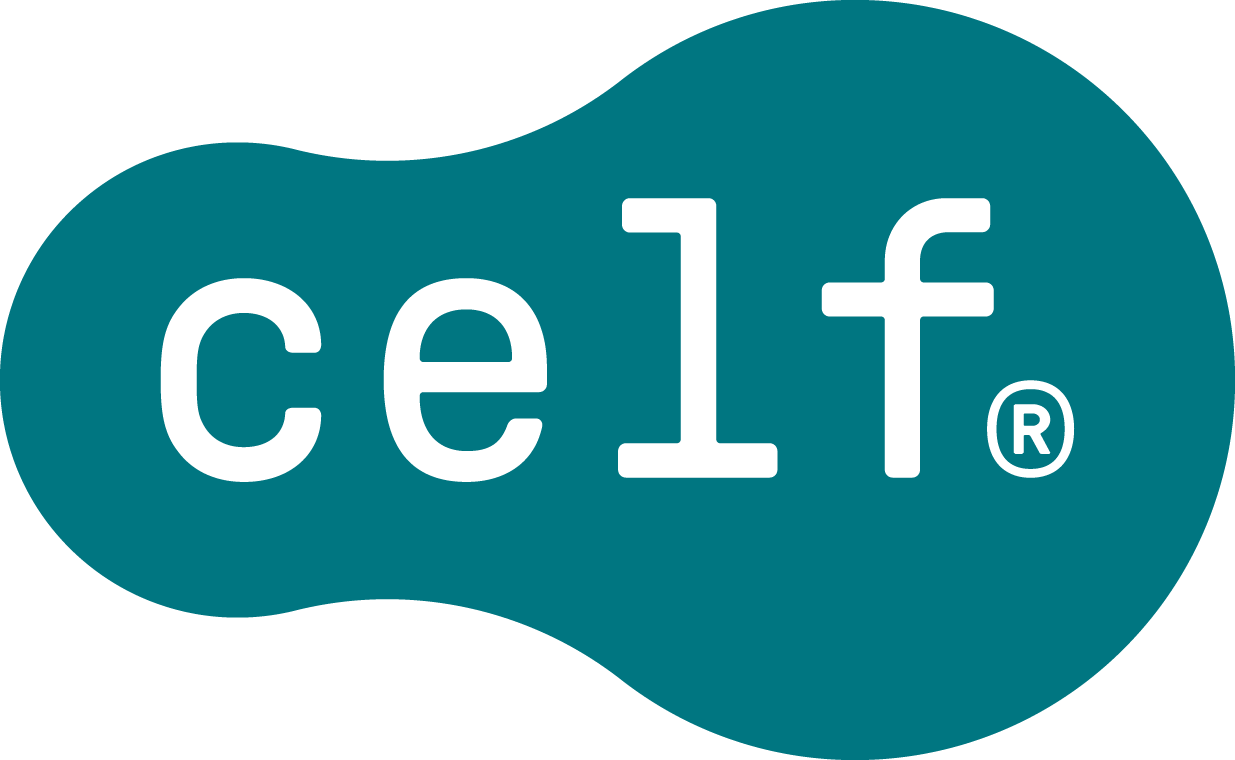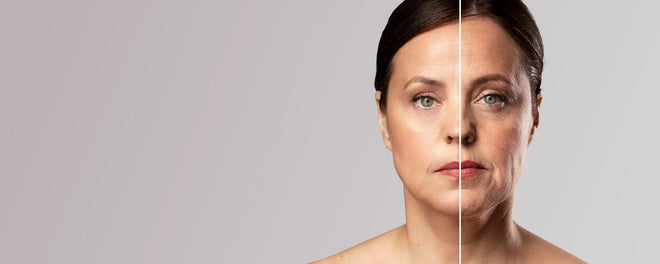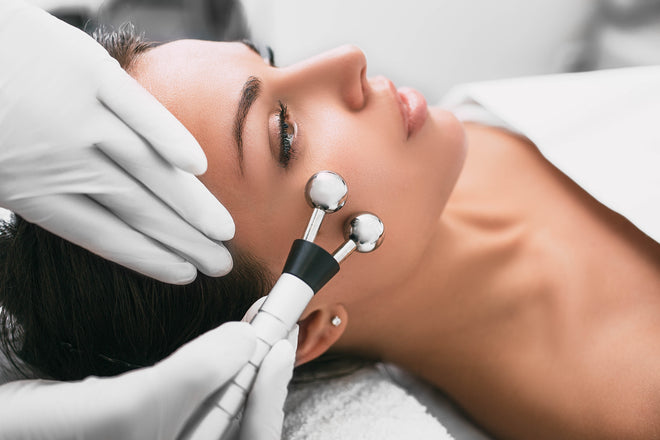Why You Have a Double Chin Even If You're Skinny | Submental Fat Explained
Table of Contents
Are you skinny and still have a double chin? Let’s understand Submental Fat
I. "How could I have a double chin? I’m not overweight.”
If you’ve noticed fullness under your chin despite being slim and healthy, you’re not alone. Submental fullness (commonly called a double chin) often has little to do with body fat. In fact, people with low body fat can still carry volume under the chin due to genetics, posture, skin laxity, and bone structure.
This article explores why you might notice a double chin despite being fit and healthy. We’ll break down common misconceptions, explain the real anatomy behind fullness under the chin, and outline solutions—from posture changes to professional treatments and non-invasive options like CELF Microvibration Therapy.
Understanding your facial structure is the first step. You don’t have to accept a double chin as permanent, and you don’t need to feel guilt or frustration about it. With the right knowledge and tools, you can take meaningful steps toward a more defined profile—on your terms.
II. What Is (And Isn't) A Double Chin
While “double chin” is a common term, it can refer to a range of underlying issues that vary from person to person. In some cases, the fullness is due to submental fat. In others, it’s more related to skin laxity, a recessed chin or jawline, or even postural or muscular factors that affect the area’s appearance.
Before exploring treatment options, it’s worth understanding what’s actually contributing to the appearance of fullness under the chin. Submental fat is just one part of the picture.
For individuals with a smaller or receding chin, even a small fat pad can appear more prominent. In others, reduced collagen and skin elasticity—common with age—can cause skin to sag below the jawline, exaggerating the look of a double chin even in the absence of significant fat.
Muscle tone also plays a role. A weak or underactive platysma muscle, along with poor head posture, can visually compress the area, deepening the appearance of fullness.
Importantly, submental fullness can show up in any body type. In lean individuals, a narrow face or low facial volume can make even minor volume under the chin stand out more.
Rather than guessing, it’s helpful to break down the cause: fat, skin laxity, bone structure, and muscle tone. Often, these factors overlap. Once you know what’s driving the appearance, you can move forward with targeted approaches—cosmetic, structural, or holistic—that align with your goals.
III. 6 Reasons You Have a Double Chin Even If You’re Skinny
Just because you have a lean body, does not mean you have a chiseled jawline.There are several anatomical and lifestyle-related reasons why fullness under the chin can appear—even when overall body fat is low.
Here are six:
Genetics: Some people are genetically predisposed to store fat in areas others do not. These localised fat pads may persist even at a low overall body weight and often don’t respond to general weight loss efforts.
Jawline / chin bone positioning: A receding or underdeveloped chin will alter the angle of the lower ⅓ of the face. A receding chin provides a shorter jawline, which makes minimal fat or skin loosening seem as if it is exaggerated or fuller.
Neck Posture ("Tech Neck"): Continuous downward focus on screens, contributes to weakening of the neck muscles and folding of the skin. Over time, poor posture can lead to structural sagging, which has an appearance similar to or enhanced submental fat.
Skin Laxity: Skin needs underlying volume and structure to stay supported. In lean faces, there may not be enough soft tissue to keep the skin taut—especially as collagen and elastin decline with age. This can result in sagging that’s often mistaken for fat.
Aging: As we grow older, we lose fat in our face and the production of collagen is diminished. Loss of volume in the midface and cheeks can create a visual imbalance that makes the neck area look fuller in comparison.
Water Retention: Temporary swelling under the chin (often called "bloated chin") may be triggered by high sodium intake, hormonal changes, or lymphatic congestion, and presents as visible puffiness—even in a very thin face.
Each one of these factors is treated differently, so it is important to understand your own unique anatomy and triggers that influence your lifestyle.
IV. The Slim, Person Submental Checklist
If you’re slim but still see fullness under your chin, here’s a quick one-minute mirror check to help you identify what might be causing it—whether it’s fat storage, structural features, or something else entirely.
Observe at Rest and Tuck Chin:
Stand in profile and relax your face. Look at yourself in the mirror.
Now, gently tuck your chin.
-
If the fullness increases dramatically: Poor posture or a hypotonic platysma muscle may be playing a major role.
-
If the fullness remains unchanged: It may point more toward fat storage or structural anatomy like a recessed chin.
-
If you see loose or crepey skin: Laxity from collagen loss could be the underlying factor.
Understanding the source helps you choose a more precise approach—whether it’s posture correction, collagen-supporting therapies, or fat-targeted treatments.
Pinch Test: Skin or Fat?
Gently pinch the skin just beneath your chin.
-
If you can lift it easily and it feels thin or slack: You’re likely dealing with skin laxity, not significant fat.
-
If the tissue feels firmer, thicker, and harder to pull away: There may be localized fat stored in the area.
-
If it’s both loose and feels padded: You could be looking at a combination of both skin laxity and fat retention.
This simple test helps clarify whether your next step should be focused on skin tightening, fat reduction, or a combination of both.
Bone Structure and Chin Definition
Still in profile, observe the angle between your chin and neck. If your chin appears set back or your jawline lacks a sharp definition, even a small amount of soft tissue can create a visible shadow or dip below the jaw.
This isn’t necessarily due to fat or skin laxity—it may be the result of your bony structure.
A recessed chin or under-projected jaw naturally reduces the support in this area, allowing any soft tissue, however minimal, to appear more prominent. This can be especially noticeable under direct lighting or in photographs.
Understanding your baseline anatomy helps avoid misdiagnosis and overcorrection. In such cases, solutions that address facial structure—rather than fat or skin—may be more appropriate.
Check for Skin Texture Changes
Look closely at the skin beneath your chin. If it appears uneven, thin, or has a crepey texture—especially when you move your neck or talk—it’s a sign of skin laxity, not fat. This usually results from reduced collagen and elastin, often related to age, sun exposure, or rapid weight loss.
Addressing this requires treatments that target skin structure, not fat reduction.
Posture Check
Hold your phone at eye level and observe how your neck feels. If your head naturally shifts forward or your neck cranes to align with the screen, it may point to postural habits that contribute to submental fullness.
This position can weaken the platysma muscle and lead to visible neck folds—even in the absence of excess fat.
V. At-Home Strategies to Support Chin Contour
Facial Massage & Lymphatic Drainage
Daily gentle massage helps drain stagnant lymph, reduce puffiness, and enhance blood circulation. Use upward strokes with your fingers or a gua sha tool from the chin to the ears to support lymphatic flow.
Neck and Chin Exercises
Strengthening exercises such as chin lifts, tongue presses, and neck stretches can help build the platysma and sternocleidomastoid muscles, potentially improving tone and reducing the appearance of fullness.
Postural Corrections
Being mindful of your head position, using phone stands, and practicing yoga or physical therapy-based posture correction exercises can improve muscular support and reduce folds.
Topical Skincare
Firming serums and creams containing ingredients like peptides, retinol, caffeine, and hyaluronic acid can help with skin quality. Apply in upward motions and consider pairing with tools like microcurrent or vibrating rollers.
Cold Therapy
Ice rollers or chilled face masks can reduce fluid retention and inflammation and enhance product absorption.
CELF Micro vibration Therapy
CELF uses targeted low-frequency vibrations to stimulate fibroblasts—cells responsible for collagen production—helping to firm and tighten skin. Regular use improves circulation, encourages lymphatic drainage, and enhances absorption of active skincare ingredients. When used consistently, it supports skin structure and elasticity, especially in the chin and jawline area.
These methods work best when used consistently and as a complement to professional interventions—or for those in early stages of skin changes.
Professional & Medical Options
If lifestyle adjustments don’t produce the results you want, several medical treatments and procedures can address the structural causes of a double chin.
Thread Lift
This minimally invasive procedure uses dissolvable threads placed under the skin to lift and support sagging tissue. It also stimulates collagen production, helping to firm the area over time. Best for early skin laxity and ideal for those with a lean face looking for subtle enhancement.
Submentoplasty
A less invasive alternative to a full neck lift, submentoplasty focuses on tightening the muscles beneath the chin and removing small amounts of fat. It’s a good option for people without excess skin but who want better muscle definition in the neck area.
Neck Lift (Platysmaplasty)
For those with significant skin laxity or visible muscle banding, a neck lift may offer the most comprehensive results. This procedure involves tightening the platysma muscle and removing loose skin. It’s more invasive and requires a longer recovery but offers dramatic improvement for advanced cases.
VI. Conclusion: Empowered Choices for a Lean Face With Fullness
If you're dealing with a double chin despite being slim, you're not alone—and you're not imagining it. Submental fullness in lean individuals is common, multifactorial, and highly treatable. The key lies in understanding your unique anatomy: is it fat, bone structure, posture, or skin laxity?
By identifying the root causes, you can take an informed and empowered approach—ranging from posture corrections and facial exercises to targeted non-invasive procedures or surgical options. Innovations like CELF Microvibration Therapy now offer a gentle, evidence- based way to firm and tone, without the need for aggressive treatment.
Above all, remember: having a double chin doesn’t mean you’re unhealthy, lazy, or doing something wrong. It simply means your body has its own natural structure, and with the right support, you can make changes that align with how you want to feel and look—without guilt, pressure, or shame.
Thread Lift: This approach involves placing dissolvable threads under the skin to lift and tighten sagging tissues. The threads stimulate collagen production and help reposition tissue upwards. It is ideal for early laxity and can offer natural, looking enhancement for a lean face.
Submentoplasty: A less invasive surgical procedure compared to a full neck lift. Submentoplasty tightens the muscles under the chin and removes small amounts of fat. It is ideal for those who do not have a lot of excess skin but want muscle tightening.
Neck Lift (Platysmaplasty): For individuals with significant skin laxity and muscle banding, a neck lift can be an optimal solution. It involves tightening the platysma muscle and removing excess skin. This is a more invasive procedure with a longer recovery but provides the most comprehensive correction of a sagging neck or double chin.
VII. At, Home Strategies to Support Chin Contour
While professional treatments can yield excellent results, many individuals prefer to start with at home care. While these methods tend to be more gradual in their impact, when done consistently, they can make a real difference—especially in younger individuals or those with mild concerns.
Facial Massage & Lymphatic Drainage: Daily gentle massage helps drain stagnant lymph, reduce puffiness, and enhance blood circulation. Use upward strokes with your fingers or a gua sha tool from the chin to the ears to support lymphatic flow.
Neck and Chin Exercises: Strengthening exercises such as chin lifts, tongue presses, and neck stretches can help build the platysma and sternocleidomastoid muscles, potentially improving tone and reducing the appearance of fullness.
Postural Corrections: Being mindful of your head position, using phone stands, and practicing yoga or physical therapy, based posture correction exercises can improve muscular support and reduce folds.
Topical Skincare: Firming serums and creams containing ingredients like peptides, retinol, caffeine, and hyaluronic acid can help with skin quality. Use consistent upward motions to apply and consider combining this with tools like microcurrent or vibrating rollers.
Cold Therapy: Ice rollers or chilled face masks can reduce fluid retention and inflammation and enhance product absorption.
These methods work best as a complement to professional interventions or for those in early stages of skin changes.
VIII. Understanding Your Chin: Structure, Not Shame
If you’re slim but noticing fullness under the chin, it’s not your imagination—and it’s not uncommon. Submental fullness in lean individuals can stem from a mix of factors: genetics, posture, bone structure, muscle tone, or skin laxity. Identifying the dominant cause helps guide the next steps.
Once you understand what’s behind the appearance—whether it’s soft tissue, weak muscle tone, or lack of bone support—you can make decisions based on facts, not assumptions. Some may benefit from simple postural correction or facial exercises. Others may prefer professional treatments like collagen stimulation, muscle tightening, or fat removal.
New options like CELF Microvibration Therapy offer a non-invasive way to improve firmness and product absorption, especially useful for those in the early stages of skin change or as maintenance after clinical work.
Practical Starting Points
-
Track objectively: Use consistent lighting and angles to take profile photos. Compare them every few weeks to see patterns.
-
Get a skilled assessment: Find an aesthetic practitioner who goes beyond basic fat loss and considers anatomy, posture, and structure.
-
Avoid rushing: Quick fixes often miss the root issue. A tailored approach may take more time but gets better, longer-lasting results.
-
Change the mindset: A double chin doesn’t mean failure. It’s a natural part of your facial structure—and one that can evolve.
Your jawline doesn’t need to meet a standard. You’re not fixing a flaw; you’re working with your unique features.
IX. CELF Therapy: A Low-Touch Option for Submental Support
CELF Microvibration Therapy is a gentle, at-home method designed for people seeking non-invasive support for skin firmness, especially under the chin. Using low-frequency vibration via the Oral B iO toothbrush, CELF supports multiple skin functions:
-
Stimulates collagen production: The vibrations activate fibroblasts, which help rebuild collagen and elastin—key to skin density and elasticity.
-
Boosts skincare effectiveness: Vibration and gentle exfoliation improve penetration of serums like hyaluronic acid and peptides, helping them reach the lower skin layers.
-
Improves circulation and lymphatic flow: The stimulation enhances local blood flow and drainage, helping reduce puffiness and encourage a more defined look.
-
Great for early maintenance: Ideal for people with mild laxity or as follow-up care after treatments, CELF integrates easily into a daily routine.
This isn’t a quick-fix gadget. It’s a consistent, biomechanical approach to support your facial structure and skincare results—quietly reinforcing firmness and tone over time.
X. Final Thoughts
A double chin isn’t a failure, and it’s not always tied to weight or effort. It’s often the result of structural and genetic factors beyond your control. But you can respond with strategies rooted in awareness, anatomy, and realistic tools.
Whether you pursue professional care, lean into holistic habits, or take a hybrid approach with innovations like CELF, the choice is yours. What matters most is that your actions align with how you want to feel and look—without guilt, pressure, or comparison.
XII. FAQs
1. Why do I have a double chin even though I'm skinny?
You can have a double chin even if you're skinny due to factors like genetics, poor posture, a naturally smaller jawline, or loose skin. Submental fat, the fat under the chin, can accumulate regardless of your overall body weight.
2. Why do I have so much submental fat?
Submental fat can be caused by hereditary factors, aging, or a sedentary lifestyle. Even if you're not overweight, your body may store fat in the chin and neck area due to how it's genetically predisposed to distribute fat.
3. Does submental fat go away with weight loss?
In some cases, submental fat reduces with overall weight loss. However, many people find that even with a lean body, the double chin persists. In such cases, targeted facial exercises, posture correction, or clinical treatments may be more effective.
4. Am I fat if I have a double chin when I look down?
No, having a double chin when you look down is common and doesn’t necessarily mean you are overweight. The natural compression of the neck skin and posture can create the appearance of a double chin temporarily, even in slim individuals.




